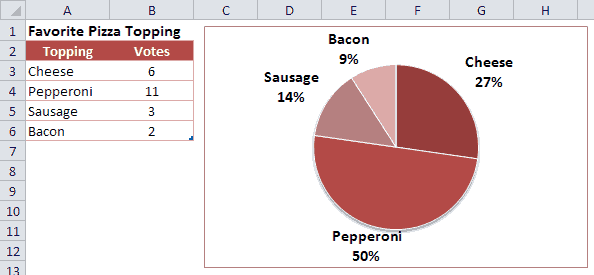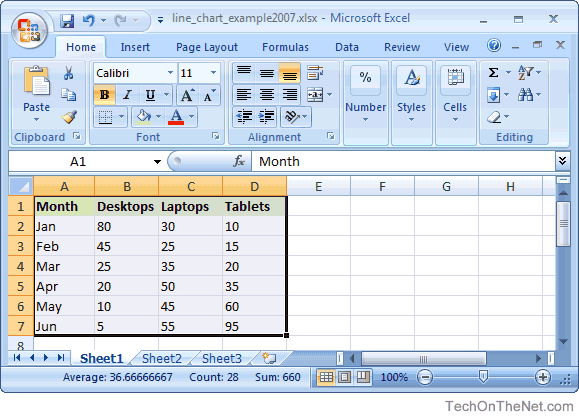

The first chart below is a Scatter Chart with Only Markers, and the second chart is a Scatter Chart with Smooth Lines. The Scatter Chart comes in several different formats: markers can indicate the data points, and the points can be unconnected or connected with smooth or straight lines. Otherwise, they have No Correlation.Įxcel does not use labels from the worksheet to label the horizontal axis.
#CHARTS EXCEL 2007 TUTORIAL SERIES#
The series pair has a Positive Correlation if they increase similarly, and a Negative Correlation if they both decrease in like manner. The relationship between two variables is called their correlation." Scatter plots show how much one variable is affected by another. However, they have a very specific purpose. of Illinois), "Scatter plots are similar to line graphs in that they use horizontal and vertical axes to plot data points. To illustrate the Scatter Chart, we will use the worksheet values shown below:Īccording to Scatter Plots (U. The purpose of a Scatter Chart is to observe how the values of two series compares over time or other category. This problem does not occur in the Stacked Area Chart shown above or the 100% Stacked Area Chart. In the first chart below, Flowers is totally hidden, and just a wee bit of Trees peaks through. In many cases, the 2-D version of the Area Chart displays multiple series of data poorly as series with lesser values may be completely hidden. The chart at right is our 3-D Area Chart and effectively displays our three series. Each comes in 2-D format and in true 3-D format with X, Y, and Z axes. The chart at left is an Area Chart for our single series.Īlso available are the Stacked Area Chart and 100% Stacked Area Chart. And like Line Charts, Area Charts are used primarily to show trends over time or other category. The Area ChartĪrea Charts are like Line Charts except that the area below the plot line is solid. This sub-type allows us to see what portion each data point has of of 100%.Īs with the other chart types, new versions of Excel provide the option of using cylinders, pyramids, or cones instead of bars. The second chart above is our 100% Stacked Bar Chart in 3-D. Excel provides the Stacked Bar Chart and 100% Stacked Bar Chart. However, Bar Charts do tend to display and compare a large number of series better than the other chart types.Īll Bar Charts are available in 2-D and 3-D formats. Sometimes it is worth the time to create both charts and compare the results. When to use a Bar Chart versus a Column Chart depends on the type of data and user preference. The first chart below is the Bar Chart for our single series, Flowers. The horizontal axis of a Bar Chart contains the numeric values. The Bar Chart is like a Column Chart lying on its side. A 3-D Line Chart is available, but the Line Chart does not display data well in three dimension. Though not as colorful as the other charts, it is easy to see how effective the Line Chart in showing a trend for a single series, and comparing trends for multiple series of data values.īesides the Line Chart, we have the Stacked Line Chart and the 100% Stacked Line Chart - with or without markers. Notice that each line is a different color. The Line Chart is equally effective in displaying trends for multiple series as shown in the above Line Chart without markers. Markers-the circles, squares, triangles, or other shapes which mark the data points-are optional, and Excel displays a unique marker in shape and/or color for each data series. The first image shows the Line with Markers chart of our single data series. The vertical axis (Y-axis) always displays numeric values and the horizontal axis (X-axis) displays time or other category.


The Line Chart is especially effective in displaying trends.


 0 kommentar(er)
0 kommentar(er)
